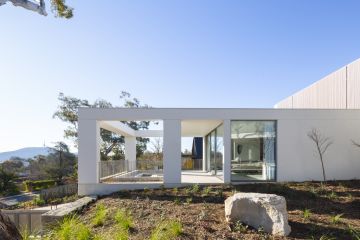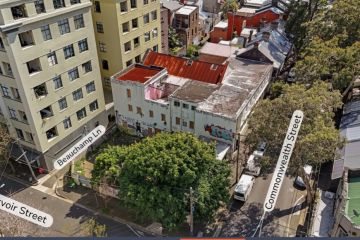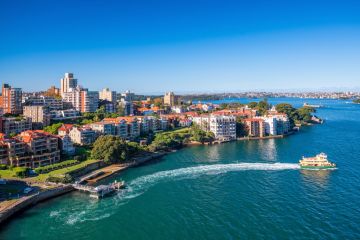Why more Melbourne families are choosing apartments over suburban homes
Theo and Gaby Aguiard and sons Enzo and Fabio are a rare, but growing, breed – a family with children consciously choosing to live in an apartment.
The Aguiards’ two-bedroom, two-bathroom apartment in Parkville has everything they want – easy city access, public transport, parks aplenty, a large balcony, ample storage and a parking space.
Ms Aguiard said the lower maintenance needs of a unit and quick access to work and schools for Enzo, 16, and Fabio, 10, save them significant time each week.
Mr Aguiard is originally from the African nation of Benin, his wife from Slovakia, and so both grew up in cultures of apartment living.
“I grew up like that and still spent most of my childhood playing outside, so I knew that you do not necessarily need a backyard to keep your kids active,” Ms Aguiard said.
Australians have clearly embraced apartment living over the past 20 years: the ratio of apartment-dwellers living in buildings of four or more storeys more than doubled from 18 per cent in 1996 to 38 per cent by 2016. But the bulk of those have been investor product – largely one- and two-bedroom units.
Now, the affordability squeeze, cooling investor sentiment and hotter competition for typical inner-suburban houses are fast changing that pattern, with more families seeking inner-suburban lifestyles creating greater demand for larger, owner-occupier apartments.
Mark Dawson, a director of research consultancy Urbis, said three-bedroom apartments have typically made up less than 5 per cent of Melbourne’s market.
But he said that market is already “creeping up as the owner-occupier market increases and the investor market for smaller product has been dampened by the deliberate cooling measures [by banks and regulators]”.
Andrew Leoncelli, managing director for residential projects at CBRE, noted that 15 per cent of sales in CBRE projects in 2017 were three-bedroom apartments. Significantly, those sales were 42 per cent up on 2016 figures.
Rob Burgess, the national director of research and strategy at Charter Keck Cramer, said that growth is just the beginning of a new era in apartment developments in Melbourne.
Mr Burgess said the Victorian Government’s Victoria in Future report found the number of households with children will grow by about 700,000 by 2050.
“Combined with changing lifestyle and locational preferences, affordability pressures … it is reasonable to assume that apartment living will become increasingly popular with families over the coming years,” Mr Burgess said.
This puts the onus back on developers to offer not only larger apartments, but also better-designed apartments.
Paul Curry is a director of Cox Architecture, the firm behind Melbourne Square – a mixed-use project in Southbank by Malaysia-based developers OSK Property that will comprise 1000 apartments in its first stage.
Mr Curry said OSK was conscious from the outset of wanting to appeal to owner-occupiers by incorporating larger apartments, quality infrastructure and design elements that would enhance the overall amenity of the precinct to attract family buyers.
Mr Curry said Melbourne Square reflected the growing demand for larger, family-style homes by offering more three-bedroom apartments than one-bedrooms, a full-line Woolworths supermarket, childcare centre and generous green space – a 3700-square metre public park, covering one-fifth of the site.
Design was a key element, too, with Mr Curry saying the slender form of the towers will allow direct views from – and natural light into – all bedrooms. Ceiling heights will typically be 2.7 metres (although many will go higher), and outdoor living space has also been prioritised.
Mr Curry said the project’s Terraces apartments, for example, include up to 125 square metres of external living space, views over the parkland and a communal resort-style pool.
“I think Melbourne Square is part of a trend towards larger, more liveable apartments … we are very determined to leave a lasting legacy [with this project],” Mr Curry said.
We recommend
States
Capital Cities
Capital Cities - Rentals
Popular Areas
Allhomes
More






